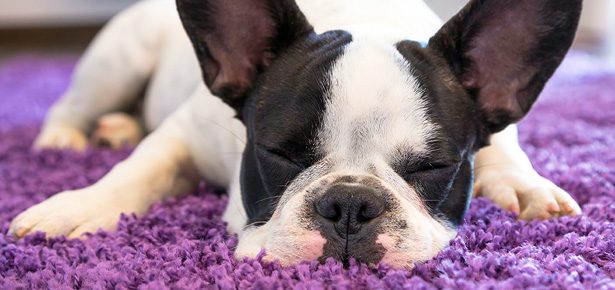

6 Ways to Help Your Rescue Dog Settle in to Her New Home
A dog that has figured out the rules can relax.
1 Start with teaching the dog a couple of simple commands like “sit” or “down.” This early interaction helps to create and strengthen the human-animal bond and helps your relationship with your dog to grow.
2 Be patient. Encourage your new rescue dog to come to you rather than you always approaching your new dog to interact. Understand that although the dog may be new to you, he already has a complex personality. It can be very rewarding to figure out what a dog likes and dislikes. Allowing your dog to initially approach you on his own terms really helps to build on your friendship with your new pet.
3 Be consistent. Make sure that every person—everyday and every time—is giving the dog the same message. Dogs like rules; rules help dogs to better understand their new home and family and build confidence. A dog that has figured out the rules can relax.
4 Set long term goals, not short term “fixes.” It will take a bit of time for your new dog to understand some things, but once she “gets it” she’ll likely never forget. Besides, your new friend is going to be with you for some years, so for both of your sake, it’s worth it to put in the work now.
5 Use “anxiety busters” such as food puzzles, problem-solving toys, or nature shows/DVDs designed for dogs to keep your new pup occupied while you’re away. This is especially important if you are going to be away for several hours. Dogs are bright and they need mental stimulation. A food puzzle toy [We like Aikiou’s interactive puzzle feeders (aikiou.com).—Ed.] that slowly dispenses some of your dog’s daily dry food will give her a project to work on while you’re out. For more tips to keep your new dog busy, active, happy and engaged, check out the ASPCA’s online fact sheet, Enriching Your Dog’s Life.
6 Always use positive reinforcement to train your dog. Just like people, dogs that are stressed or anxious do not learn well. They need to be calm and focused to really interact with you and learn what you’re trying to teach them. Remember, when you’re teaching the dog a trick or specific behaviour, about half of the actual learning is you figuring out how best to interact with your new family member.
Join the newsletter and never miss out on dog content again!
"*" indicates required fields
By clicking the arrow, you agree to our web Terms of Use and Privacy & Cookie Policy. Easy unsubscribe links are provided in every email.